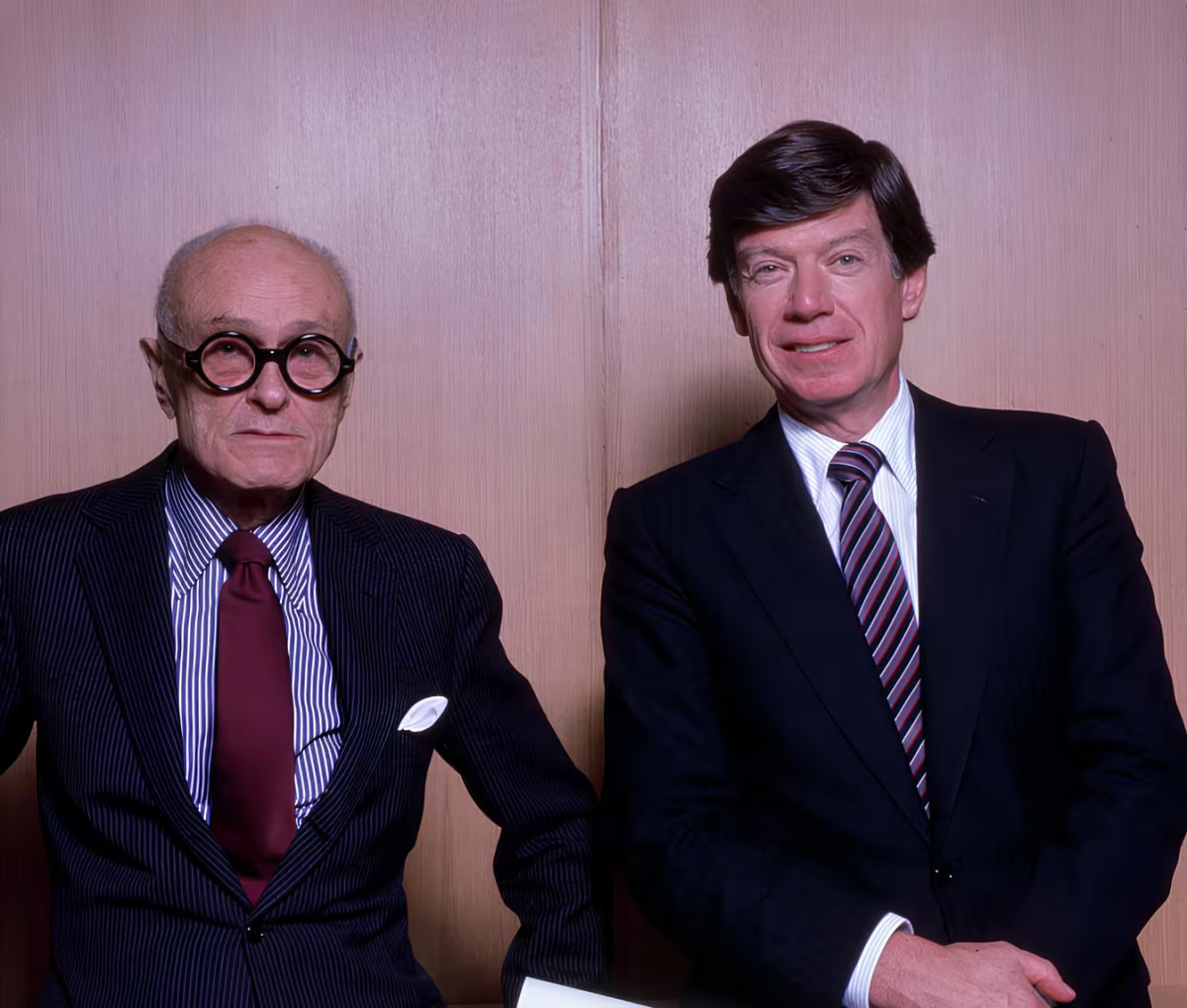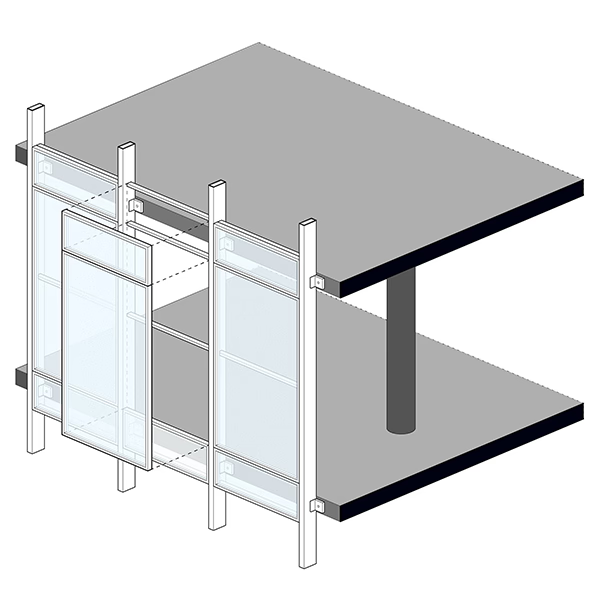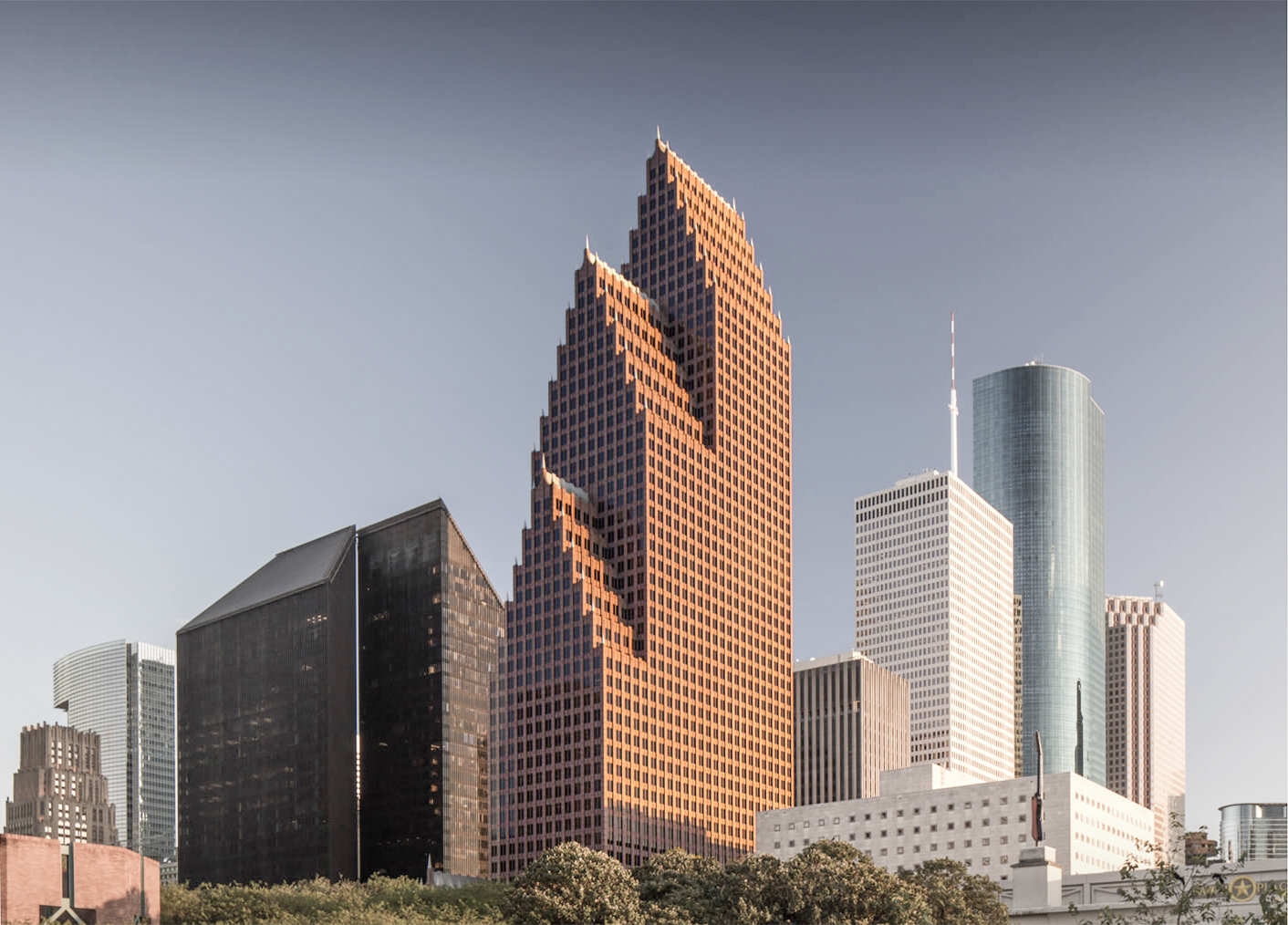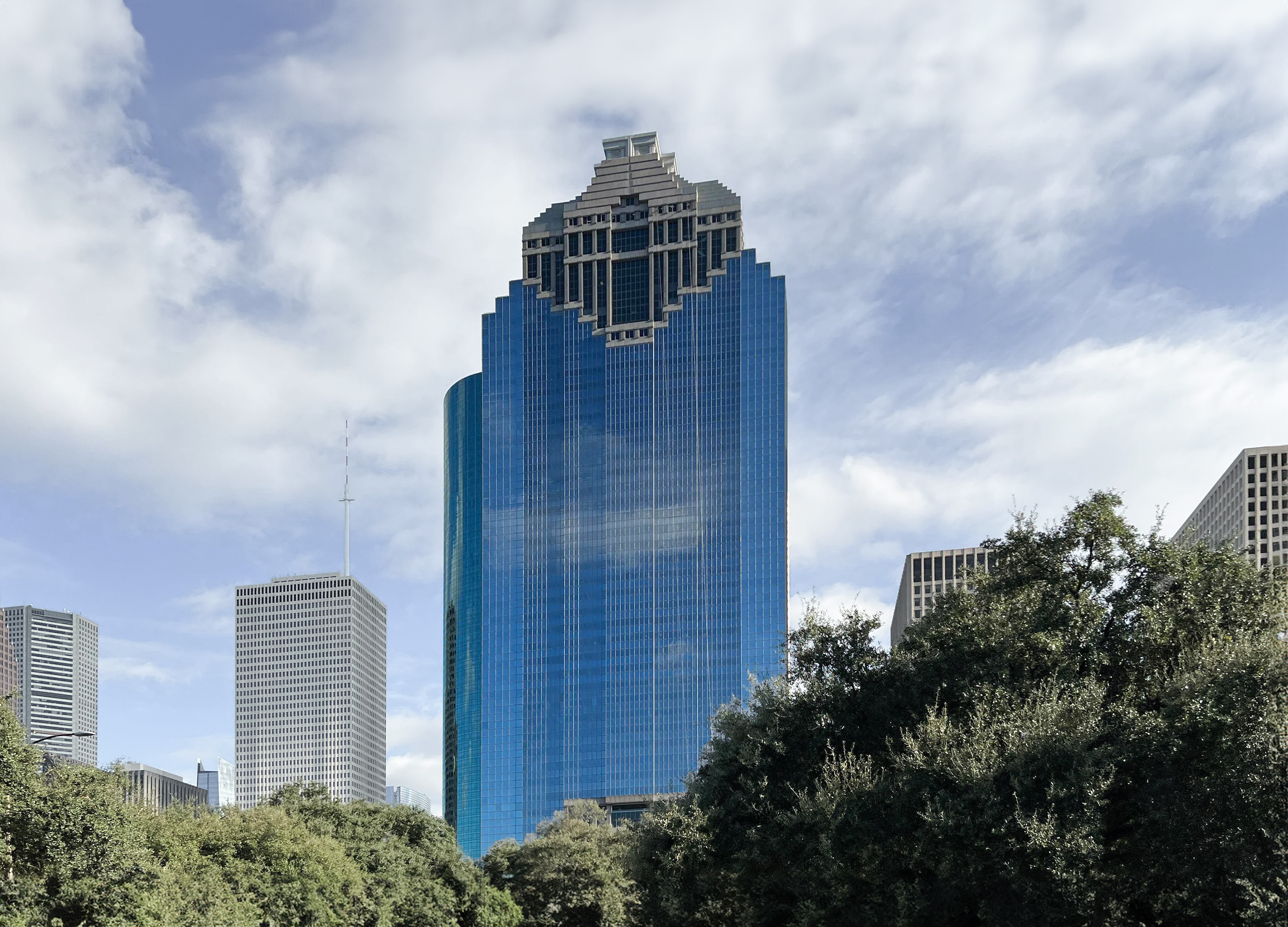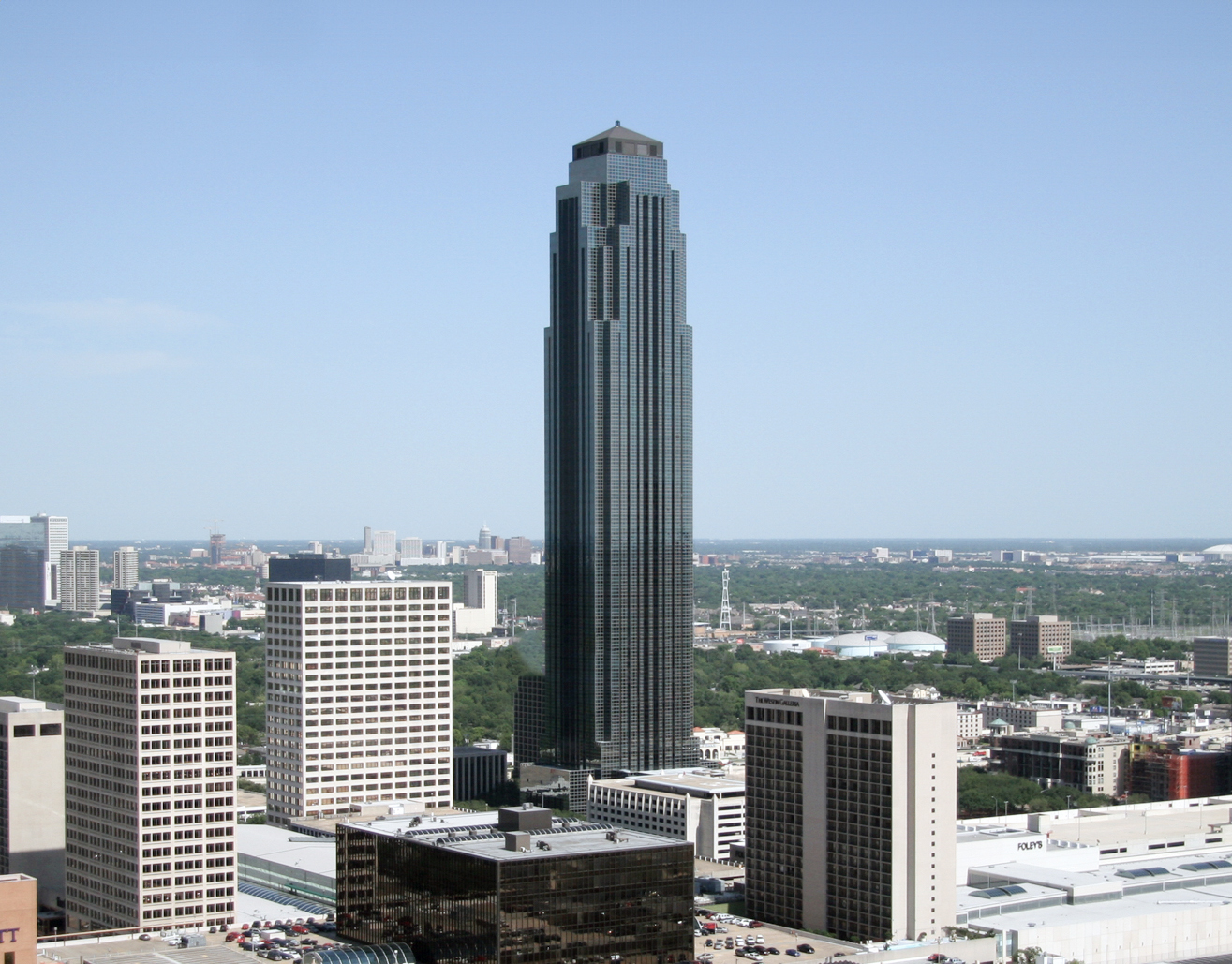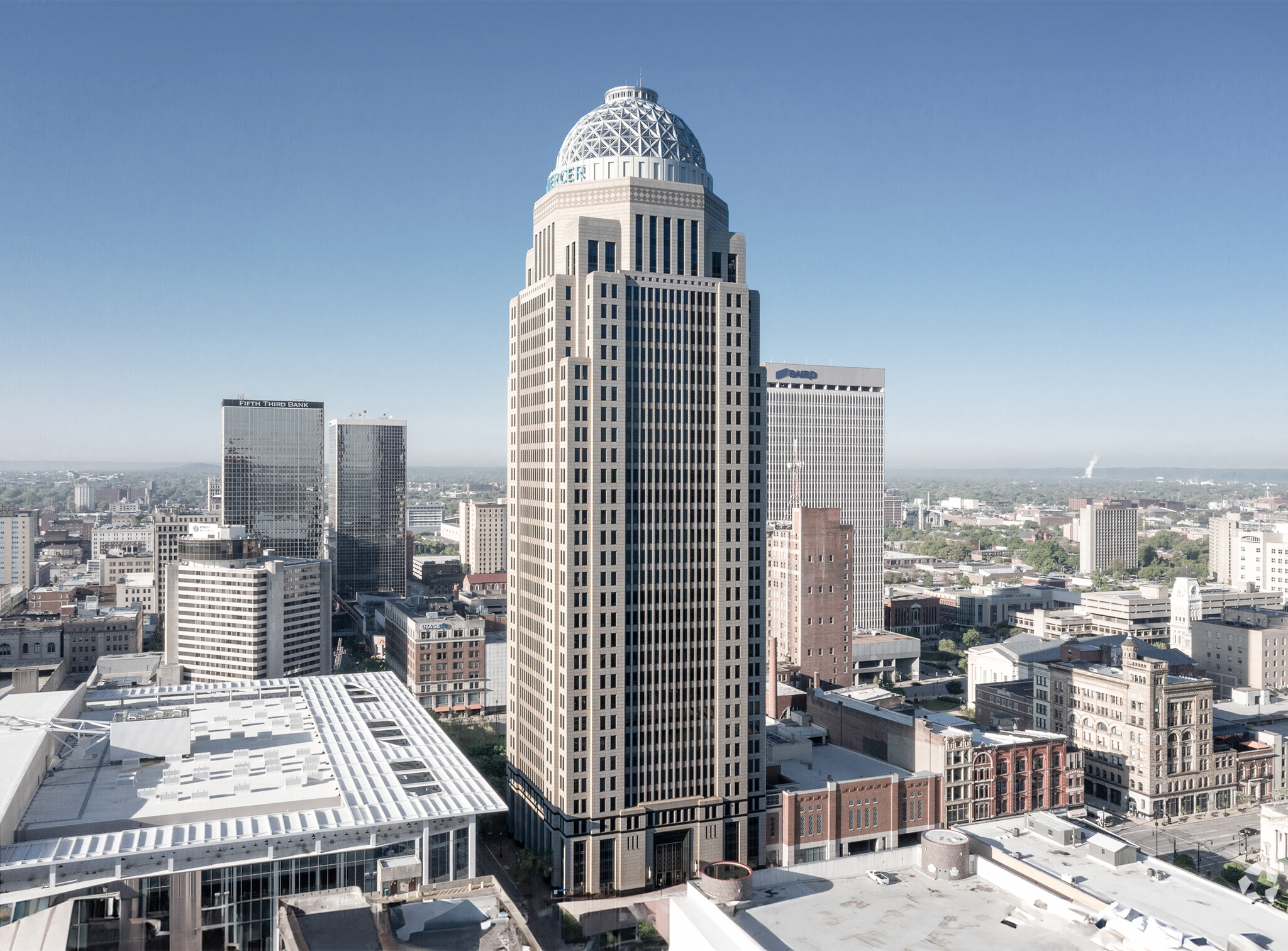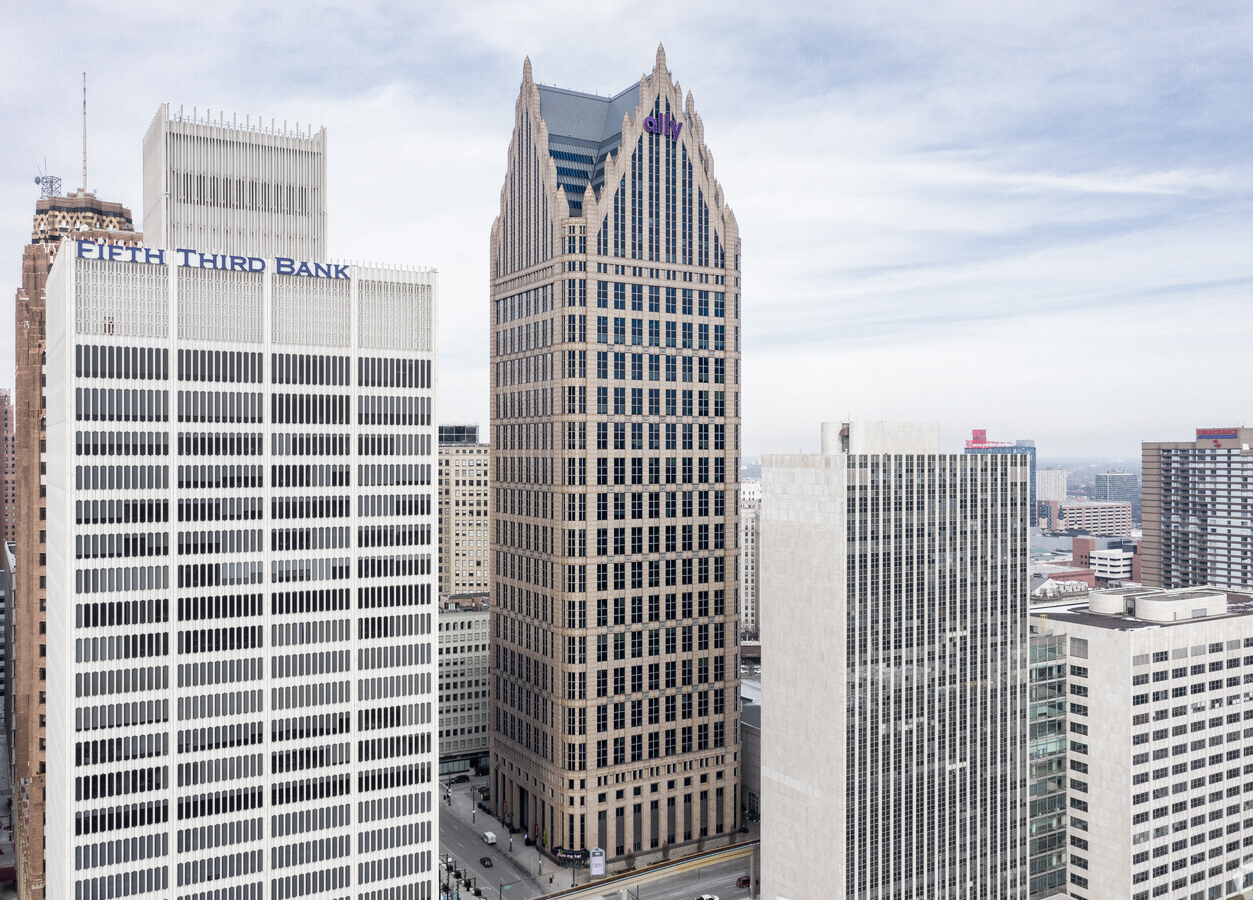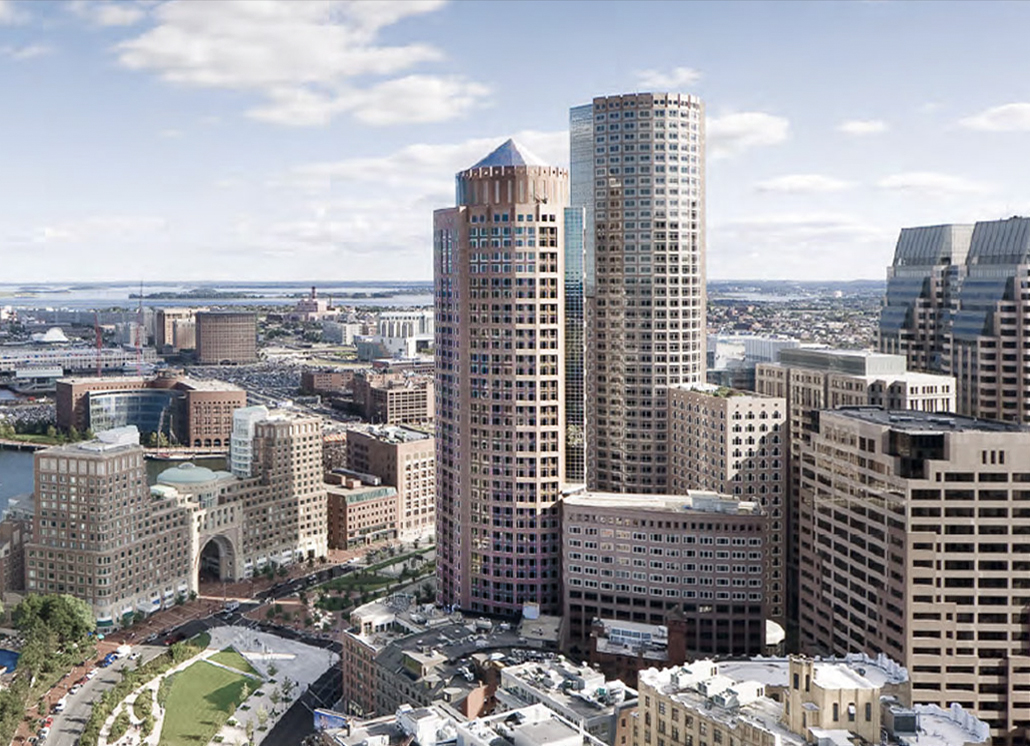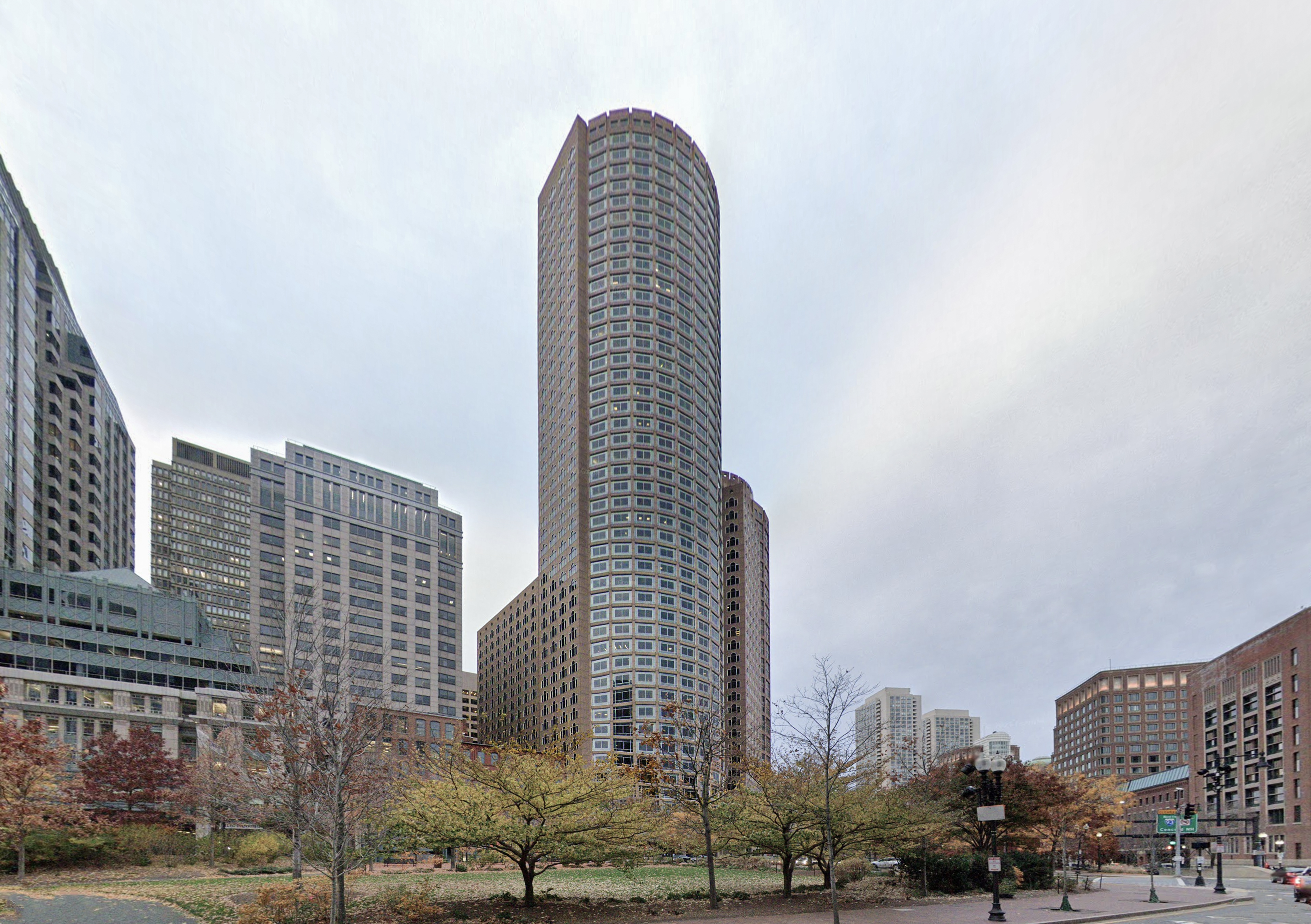The Pennzoil Place is a Postmodernist skyscraper designed in 1970 by Johnson/Burgee Architects, with Eli Attia as lead architect, in association with S.I. Morris Associates, and built between 1973 and 1975, for a reported $50.0 million dollars, in Houston, TX.
Its precise street address is 700 Milam Street, Houston, TX. You can also find it on the map here.
The Pennzoil Place has received multiple architecture awards for its architectural design since 1975. The following is a list of such prizes and awards:
- R.S. Reynolds Memorial Award in 1978
- AIA Twenty-five Year Award in 1999
- Texas Society of Architects 25-Year Award in 2018
Pennzoil Place consists of two twin trapezoidal towers. This article covers the complex as a whole, meaning data such as floor area, or elevator counts, combine both towers.
According to some critics, Pennzoil Place is 'Philip Johnson’s last modern building or his first postmodern one.' .
At the time of its completion in 1975 the Pennzoil Place incorporated solutions that were quite advanced at the time, these included being the first office building in Houston to implement fiber-optic infrastructure for IT communications, utilizing Cisco’s 'Smart+Connected' building model to optimize data and communications management, strengthen physical security, and enhance building automation capabilities..
The building underwent a major restoration in 2009.

